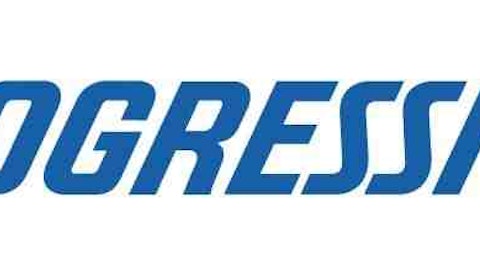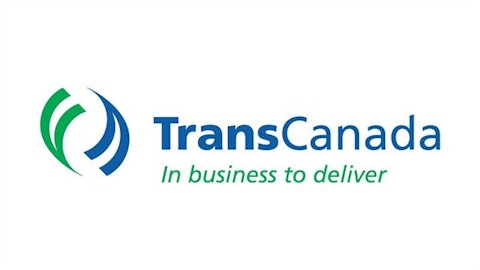One of the better known investment rules of Mr. Buffett is to only invest in companies with sufficiently wide economic moats. By that, he means companies that have a strong edge over their peers. This edge can present itself in many forms. It could be a business with extremely high barriers to entry, or it could be a brand whose loyal fans will never desert in favor of another brand (did anyone say Coke?). Investing in such businesses has been the ultimate practice of Berkshire Hathaway Inc. (NYSE:BRK.A), and that’s why it owns iconic brands such as The Coca-Cola Company (NYSE:KO) and Heinz. But recognizing a business with a strong economic moat isn’t an easy task because everyone thinks that they have a wide economic moat. That’s just the way it is.
Berkshire knows how to recognize them

It’s hated
Moody’s Corporation (NYSE:MCO) rates securities, mostly bonds. Investors use Moody’s ratings to judge the relative risk in various bond issues. The safest bonds are thought to be those rated BBB and higher. They’re called investment-grade. The thing about Moody’s Corporation (NYSE:MCO) is that it’s out of favor with many investors because in the years leading up to the financial crisis, the company gave securities made of junky subprime mortgages a pristine AAA rating. It’s been assumed by short sellers that Moody’s would be litigated out of existence, or at least into a less competitive position. But neither has happened. Moody’s continues to provide ratings and gush free cash flow. The SEC has investigated and has found no smoking gun and no fraud. Moody’s Corporation (NYSE:MCO) has litigated more than 20 times and won every time.
Desirable product
Moody’s operates in a terrific sector. It sells a highly desirable product its customers will always want. And this product is insurance from our own mistakes. Institutional financial managers want to be able to say, “Moody’s told me it wasn’t a risky bond.” In essence, its customers rely on Moody’s Corporation (NYSE:MCO) ratings so that if they make a mistake, they can point the finger at Moody’s rather than at themselves. Moody’s doesn’t attempt to predict market trends and it couldn’t care less whether the stock market rises or falls. It simply sells a service to an army of hungry market followers. Since there’s never a shortage of people who you wish to blame for your unsuccessful bond picks…Moody’s Corporation (NYSE:MCO) is never out of work.
Look at these margins!
Moody’s requires so few assets and uses enough debt financing that it consistently reports negative equity on its balance sheet, a phenomenon that frequently identifies a low-capital-expenditure, high-cash-flow business. So Moody’s Corporation (NYSE:MCO) mints money. In 2012, Moody’s raked in $690 million in net income, up from $507 million in 2010. And this income didn’t come at the expense of cash flow. In 2012 alone, the company generated $995 million, up from $185 million in 2010. That’s a whopping rise of 440% in only two years. Obviously, you can’t generate that much cash without having terrific margins. Moody’s boasts an operating margin exceeding 40% (!) and a net profit margin of over 25%. As I wrote earlier, that’s a sure sign of an economic moat. In addition, Moody’s doesn’t require an expensive plant to run its operations. It has very low capital expenditures, which explains why it can show a 20% return on its assets.
Valuation
Such a great business doesn’t come cheap, but Moody’s Corporation (NYSE:MCO) isn’t expensive either. The rating agency currently trades at a forward price-to-earnings of only 15x. If you consider the more acceptable form of valuation, the cash flow basis, Moody’s isn’t expensive either. It now trades for about 14 times free cash flow. I don’t find Moody’s Corporation (NYSE:MCO) at all overvalued these days.
The Foolish conclusion
If you wish to become a successful investor, always make sure you can spot a strong economic moat from a distance. Moody’s, with its cash flow generation, exceptionally high margins, and a strong and loyal customer base, is the perfect example of a business with a strong economic moat. Invest accordingly.
Shmulik Karpf has no position in any stocks mentioned. The Motley Fool recommends Berkshire Hathaway Inc. (NYSE:BRK.A) and Moody’s Corporation (NYSE:MCO). The Motley Fool owns shares of Berkshire Hathaway Inc. (NYSE:BRK.A).
The article How to Recognize a Strong Economic Moat originally appeared on Fool.com.
Shmulik is a member of The Motley Fool Blog Network — entries represent the personal opinion of the blogger and are not formally edited.
Copyright © 1995 – 2013 The Motley Fool, LLC. All rights reserved. The Motley Fool has a disclosure policy.




